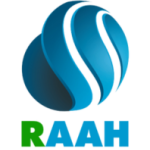RAAH's Expertise in Delivering the Perfect KVM Extender Solution for Complex Server Environments
Customer’s Challenge:
The customer approached RAAH with a requirement for a KVM solution to manage three servers in a server cabinet. They were unclear on certain technical specifications and had several specific questions regarding the solution’s compatibility, power requirements, and setup configuration. The customer’s primary concerns were:
- Ethernet Cable Usage: The customer wondered if it was possible to use a single Ethernet cable between TX (transmitter) and RX (receiver) for three servers.
- Power Adapter Compatibility: The customer needed confirmation on whether an Australian power adapter would be available for the proposed models, as the end user is based in Australia.
- Lead Time: The customer was unsure about the lead time for the delivery of the proposed module.
- PTR (Product Track Record): The customer asked whether there were any existing references (PTR) for similar modules that had been supplied or were already running.
- Datasheet for the Proposed Module: The customer requested detailed datasheets for the proposed KVM module.

Initial Assessment by RAAH Experts:
RAAH’s sales engineers analyzed the requirements and realized that the customer was asking for a KVM extender solution with specific input and output ports:
- Input Requirement: The customer needed a KVM extender that could handle 3 servers (with VGA ports) in a server cabinet.
- Output Requirement: A single monitor in the engineering room with a KVM receiver and the ability to switch between the 3 servers via VGA input.
Given the setup, RAAH experts provided clear and specific answers to each question and began crafting a solution tailored to the customer’s needs.
RAAH’s Response and Solution Design:
Single Ethernet Cable Usage for 3 Servers:
- The sales engineer confirmed that using a single Ethernet cable between TX and RX for three servers was not feasible with typical KVM extenders, as each server requires a dedicated channel. However, RAAH recommended an alternative KVM solution that supports multi-server management via VGA and Ethernet connections, ensuring that each server’s video output could be routed separately.
- Power Specifications: The customer asked for specific details on the input power requirements (voltage) for both the KVM extender transmitter and receiver, as well as the types of power adapters available for these devices.
- Power Adapter Compatibility for Australia:
- RAAH confirmed that they could provide power adapters that would be compatible with the customer’s needs in Australia. Specifically, the required Australian power adapter was available for the KVM extender modules, and the sales engineer shared product photos and specifications to ensure the customer’s cabinet would have the correct power provision.
- Lead Time for the Proposed Module:
- Based on the available stock and shipping timelines, RAAH provided an estimated lead time for the proposed module of 2-3 weeks, including delivery to Australia. The customer was informed that the lead time may vary depending on specific configuration requests.
- PTR (Product Track Record) for the Proposed Module:
- The customer was looking for evidence that the KVM module had been successfully supplied or is running in similar environments. RAAH provided references to successful deployments of similar KVM extenders in corporate data centers, as well as testimonials from customers in Australia, showing that the solution would be reliable and well-suited to their needs.
- Datasheet for the Proposed Module:
- RAAH’s sales engineer promptly provided the customer with detailed datasheets for the proposed KVM extender, including specifications for power requirements, supported resolutions, VGA input/output compatibility, and the number of servers the system could support. The datasheet also included technical details regarding the power consumption and voltage requirements, ensuring the customer could verify the compatibility with their server cabinet power infrastructure.
KVM Setup and Solution Diagram:
RAAH provided a complete KVM solution diagram illustrating how the KVM extender would connect the 3 servers (with VGA ports) in the server cabinet and the single monitor in the engineering room. The diagram also showed how the KVM switch could be used to toggle between the servers with ease.
Power Requirements and Adapters:
- The KVM extender required 12V DC power for both the transmitter (TX) and receiver (RX). The sales engineer recommended 12V power adapters that would work within the power provision in the server cabinet.
- Pictures of the 12V power adapters were shared with the customer for confirmation.

Conclusion:
With the detailed KVM solution diagram, datasheets, power specifications, and references, the customer now had a clear understanding of the exact solution they needed for their server setup.
RAAH’s sales engineers, by proactively providing answers to the customer’s technical queries and suggesting the best KVM extender configuration, helped the customer finalize their purchase decision. The customer was satisfied with the detailed, tailored solution and promptly placed an order.
Contact us today at sales@raahgroup.com to get the right solutions for your business.
Result:
The customer received the right KVM extender solution in a timely manner, equipped with the appropriate power adapters and supported by RAAH’s expert technical advice.
